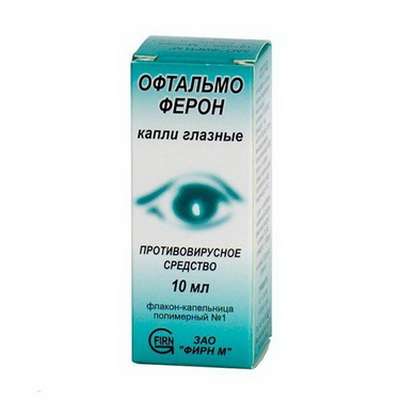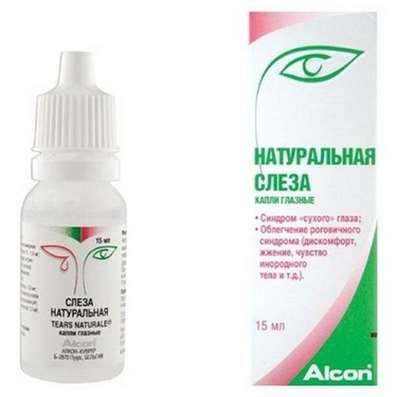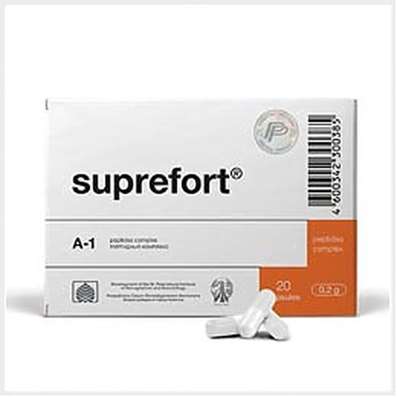Instruction for use: Nadolol
I want this, give me price
Trade name of the drug – Corgard
The Latin name of the substance Nadolol
Nadololum (genus. Nadoloi)
Chemical rational name: cis-5- [3 - [(1,1-dimethylethyl) amino] -2-hydroxypropoxy] -1,2,3,4-tetrahydro-2,3-naftalindiol
Gross formula C17H27NO4
Pharmacotherapeutic group: Beta-blockers
The nosological classification (ICD-10)
G25.0 Essential tremor: shake; Generalized muscle tremors; Essential tremor family; essential tremor; Tremor idiopathic; Tremor idiopathic benign; Tremor hereditary; Essential tremor is benign
G43 Migraine: The pain of migraine; Migraine; hemiplegic migraine; Migraine headache; A migraine attack; Continuous headache; hemicrania
I10 Essential (primary) hypertension: hypertension; Arterial hypertension; Arterial hypertension crisis course; Essential Hypertension; Essential hypertension; Essential hypertension; Essential hypertension; Essential hypertension; Primary hypertension; Arterial hypertension, complications of diabetes; The sudden increase in blood pressure; Hypertensive disorders of blood circulation; hypertensive condition; hypertensive crises; arterial Hypertension; malignant Hypertension; Hypertonic disease; hypertensive crises; accelerated hypertension; malignant hypertension; The aggravation of hypertensive disease; Transient hypertension; Isolated systolic hypertension
I15 Secondary hypertension: Arterial hypertension, complications of diabetes; hypertension; The sudden increase in blood pressure; Hypertensive disorders of blood circulation; hypertensive condition; hypertensive crises; hypertension; arterial Hypertension; malignant Hypertension; hypertensive crises; accelerated hypertension; malignant hypertension; The aggravation of hypertensive disease; Transient hypertension; hypertension; Arterial hypertension; Arterial hypertension crisis course; renovascular hypertension; Hypertension symptomatic; Renal hypertension; Renovascular hypertension; renovascular hypertension; Symptomatic hypertension
I20 Angina [angina]: Heberden disease; Angina pectoris; The attack of angina pectoris; recurrent angina; Spontaneous angina; Stable angina pectoris; Angina rest; Angina progressing; Angina mixed; Angina spontaneous; stable angina; Chronic stable angina; Angina Syndrome X
I21 Acute myocardial infarction: Myocardial infarction in the acute phase; Acute Myocardial Infarction; Myocardial infarction with pathologic Q wave and without; Myocardial infarction complicated by cardiogenic shock; Infarction left ventricular; Transmural myocardial infarction; Myocardial infarction netransmuralny (subendocardial); Netransmuralny myocardial infarction; Subendocardial myocardial infarction; The acute phase of myocardial infarction; Acute myocardial infarction;Sub-acute phase of myocardial infarction; Subacute phase of myocardial infarction; Thrombosis of the coronary arteries (the arteries); Threatened myocardial infarction; Myocardial infarction without Q wave
I22 Subsequent myocardial infarction: Atherosclerosis and the likelihood of reinfarction; Myocardial infarction re; Relapses myocardial infarction
I34.1 prolapse [prolapse] mitral valve: Rupture of papillary muscle; Barlow syndrome; Mitral valve prolapse syndrome; Mitral valve prolapse
I42 Cardiomyopathy: cardiopathy; diffuse cardiomyopathy; Diffuse neobliteriruyuschaya cardiomyopathy; myocardial Gipokaliygistidii; myocardiodystrophy; Acute cardiomyopathy; Chronic cardiomyopathy
I47.1 Supraventricular tachycardia: Supraventricular paroxysmal tachycardia; supraventricular tachyarrhythmia; supraventricular tachycardia; Supraventricular arrhythmias; Supraventricular paroxysmal tachycardia; supraventricular tachyarrhythmias; supraventricular tachycardia; Neurogenic sinus tachycardia; orthodromic tachycardia; Paroxysmal supraventricular tachycardia; Paroxysm of supraventricular tachycardia; Paroxysm of supraventricular tachycardia with WPW-syndrome; Paroxysm of atrial tachycardia; Paroxysmal supraventricular tachyarrhythmia; Paroxysmal supraventricular tachycardia; Politopnye atrial tachycardia; Atrial fibrillation; Atrial tachycardia is true; Atrial tachycardia; Atrial tachycardia with AV block; reperfusion arrhythmias; Reflex Bertsolda-Jarisch; Recurrent sustained supraventricular paroxysmal tachycardia; Symptomatic ventricular tachycardia; Sinus tachycardia; Supraventricular paroxysmal tachycardia; supraventricular tachyarrhythmia; supraventricular tachycardia; supraventricular arrhythmia; supraventricular arrhythmias; Tachycardia of AV connections; supraventricular tachycardia; Tachycardia orthodromic; sinus tachycardia; The nodal tachycardia; Chaotic atrial tachycardia politopnye; Wolff-Parkinson-White
I49.4 Other and unspecified premature depolarization: extrasystole arrhythmia; extrasystole; extrasystole unspecified
I49.9 Irregular heartbeat, unspecified: Paroxysmal supraventricular tachycardia; extrasystole arrhythmia; Atrial fibrillation tachysystolic; supraventricular tachyarrhythmia; supraventricular arrhythmias; AV reciprocating tachycardia; AV-nodal reciprocating tachycardia; ventricular fibrillation; Irregular heartbeat; Antidromic reciprocating tachycardia; Cardiac arrhythmias; Arrhythmias; Arrhythmia; Heart arythmy; Arrhythmia due to hypokalemia; ventricular tachyarrhythmias; The high frequency of ventricular contraction; Cardiac arrhythmias; Paroxysmal supraventricular arrhythmia; Paroxysmal supraventricular arrhythmia; Paroxysmal dysrhythmia; Paroxysmal atrial-ventricular rhythm; cardiac arrhythmias; supraventricular tachycardia; tachyarrhythmia; Precordial abnormal pulsation
CAS code 42200-33-9
Description
The white crystalline powder. It is soluble in ethanol, hydrochloric acid, water and weakly in chloroform, sparingly soluble in sodium hydroxide. The molecular weight of 309.40.
Pharmacological Properties of Nadolol
Pharmachologic effect - antianginal, hypotensive, anti-arrhythmic.
Blocks beta1- and beta2-adrenergic receptors, has no intrinsic sympathomimetic and membrane stabilizing activity. Stops central sympathetic impulses to the periphery, decreases the sensitivity of peripheral tissues to catecholamines, inhibits renin secretion. It slows the frequency and force of heart contractions, reduces the rate of spontaneous excitation of the sinus and ectopic pacemakers, slows AV conduction. Lowers and Sad Dad, cardiac output and myocardial oxygen demand (including during exercise). It reduces the risk of recurrent myocardial infarction and improves blood flow in the ischemic area, inhibits the development of reflex tachycardia. Hypotensive action develops within 24 h. The renal function improves (at normal doses renal blood flow increased by 17-26%). It reduces the frequency of migraine attacks (prevents vasoconstriction in the internal carotid artery and excessive adrenergic impulses, leading to the expansion of the external carotid artery).
In experimental studies in rabbits at doses up to 10 times higher than MDRCH, has embryotoxic and foetotoxic effect. In the 2-year study in rats and mice revealed no carcinogenic and teratogenic effects.
After ingestion poorly and irregularly absorbed from the gastrointestinal tract (about 30%). Cmax in plasma observed after 3-4 h. The equilibrium concentration in the blood is achieved after 6-9 days of regular admission. Plasma protein binding is 18-30%. T1 / 2 - 14-24 h, there is a tendency to an increase in renal failure. Do not metabolized in the body is excreted in the urine and bile in unchanged form. After a single dose completely excreted after 4 days. Almost does not penetrate the blood-brain barrier, and others. Gistogematicalkie barriers, is secreted into breast milk passes through the placental barrier (the risk of hypoglycaemia, bradycardia, hypotension, difficulty in breathing in the fetus and newborn).
Application of the substance Nadolol
Hypertension, angina, sinus tachycardia; prevention of paroxysmal supraventricular and ventricular arrhythmias, bigemia, trigeminy; hypertrophic cardiomyopathy, mitral valve prolapse, myocardial infarction (in clinically stable condition of the patient), cardiac hyperkinetic syndrome, tremor (essential), an alarm condition (symptomatic treatment), migraine (prevention).
Contraindications for Nadolol
Hypersensitivity, severe bradycardia (less than 50 u. / Min), AV blockade II-III degree, sick sinus syndrome, cardiogenic shock, chronic and refractory to severe heart failure treatment, pulmonary heart disease, hypotension, obliterating vascular disease (Raynaud's syndrome ), bronchial asthma (including history), breast-feeding.
Restrictions to application
Disorders of the liver and kidneys, diabetes, hypoglycemia, hyperthyroidism, chronic obstructive pulmonary disease, allergic history, the elderly and children's age.
Pregnancy and breast-feeding
Perhaps if the expected effect of therapy outweighs the potential risk to the fetus.
Category effects on the fetus by FDA - C.
At the time of treatment should stop breastfeeding.
Side effect of Nadolol
From the nervous system and sensory organs: fatigue, headache, sleep disturbance and speech, paresthesia, visual disturbances, decreased libido.
From the respiratory system: nasal congestion, cough, rarely - bronchospasm.
Cardio-vascular system and blood (blood, hemostasis): bradycardia, AV block, hypotension, heart failure, cold extremities.
From the digestive tract: dry mouth, anorexia, nausea, vomiting, dyspepsia, flatulence, diarrhea or constipation.
Other: impotence, rash, prurigo, dryness of the eyes and skin, rash, swelling of the face, alopecia, changes in body weight.
Interaction
It should not be used simultaneously with MAO inhibitors. Dihydropyridine calcium antagonists, sympatholytic, peripheral vasodilators, diuretics potentiates hypotension; epinephrine and isoprenaline - weaken. The likelihood of violations of automaticity, conduction and contractility of the heart increases against the backdrop of amiodarone, diltiazem, verapamil, quinidine drugs and general anesthetics.
Overdose
Symptoms: dizziness, bradycardia, arrhythmia, hypotension, difficulty in breathing, akrotsianoz, heart failure, in severe cases - collapse.
Treatment: hemodialysis, atropine (in / 0.25-1 mg) beta-agonists (isoprenaline), tranquilizers (diazepam, lorazepam), cardiotonics (dobutamine, dopamine, epinephrine, norepinephrine, cardiac glycosides), diuretics and et al. symptomatic treatment.
Routes of administration
Inside.
Precautions for substance Nadolol
Treatment stopped gradually over about 2 weeks (prevention of withdrawal syndrome). Dosage adjustment is necessary in elderly patients. Mask symptoms of hypoglycaemia (tachycardia, changes in blood pressure) and hyperthyroidism (tachycardia). Against the background of immunotherapy or aggravated allergic history, should be replaced by others. This pharmacological drug groups (increased severity and duration of anaphylactic reactions to allergens, eliminates the effect of conventional doses of epinephrine). It should refrain from the use in the pediatric population because safety and efficacy in children has not been determined. It is necessary to cancel a few days before surgery with the use of inhalation anesthesia (including dental surgery) or select an anesthetic with the least negative inotropic effect. In preparing the patient for a partial thyroidectomy for 10 days, taken with potassium iodide. Be wary of during the drivers of vehicles and people skills relate to the high concentration of attention. At the time of treatment is recommended to exclude alcohol intake.
Special instructions
During treatment, you can change the test results in laboratory studies.

 Cart
Cart





